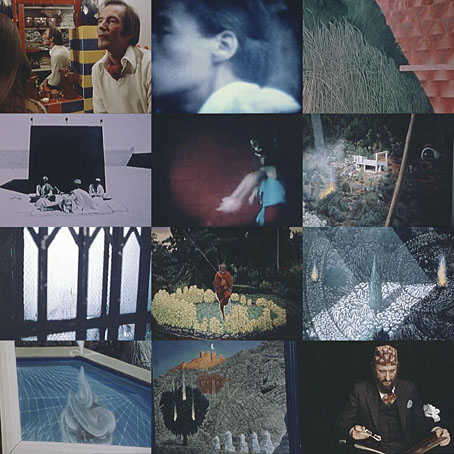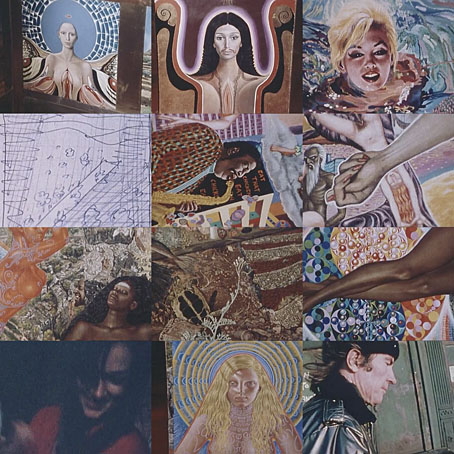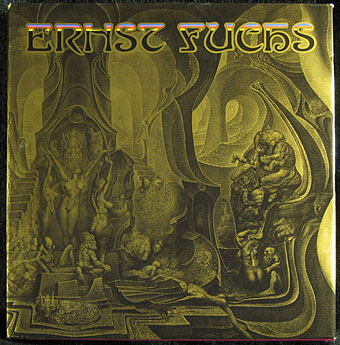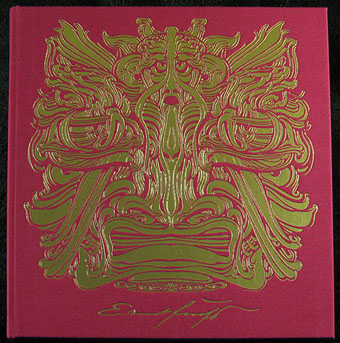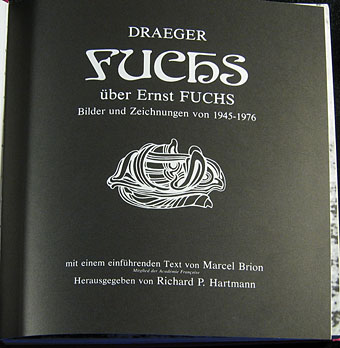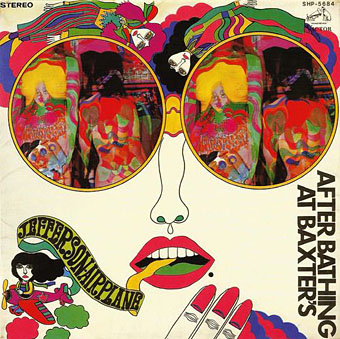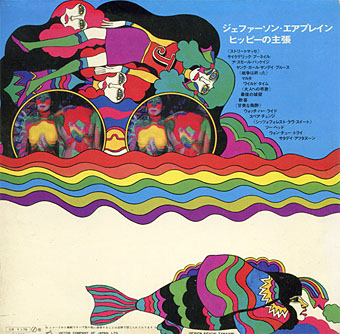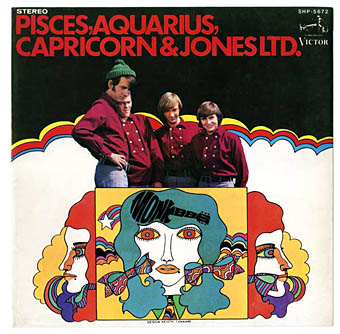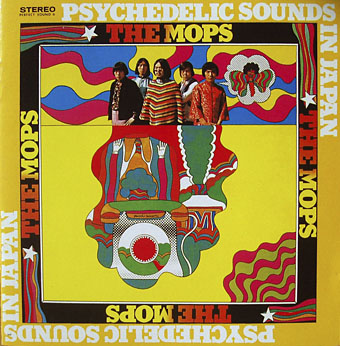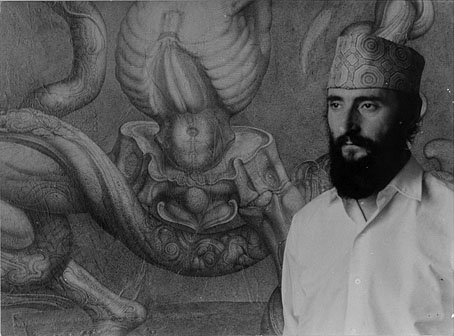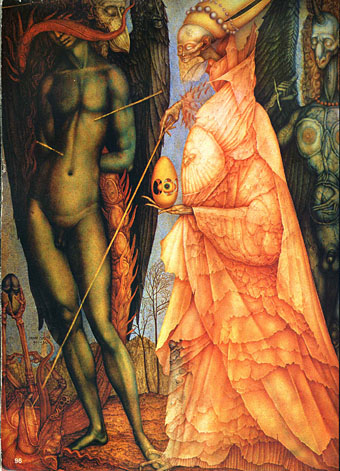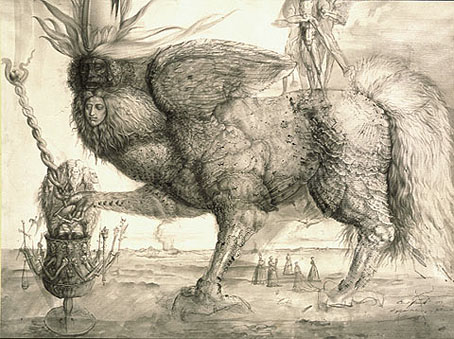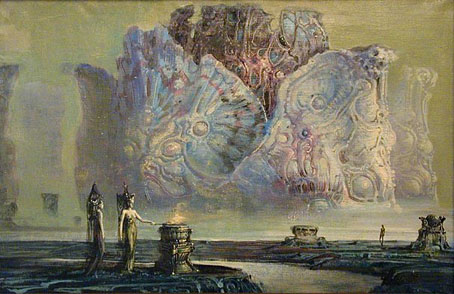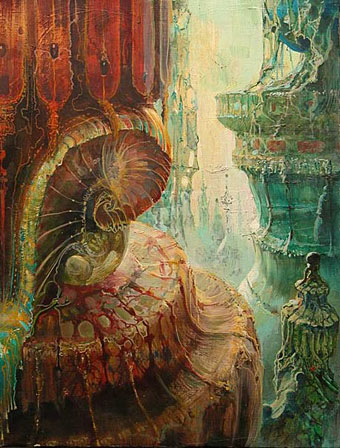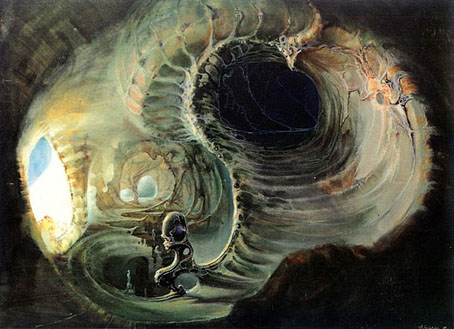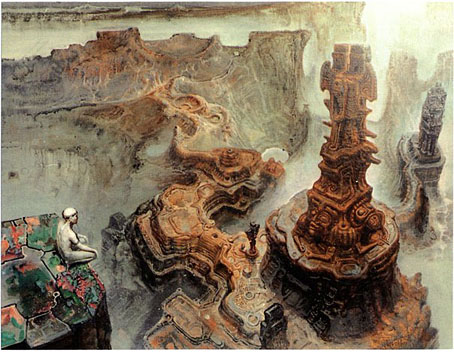And speaking of the 1970s and Ernst Fuchs and Mati Klarwein… Fabienne Strouvé’s Mati Klarwein, peintre Américain is a 25-minute portrait of Mati Klarwein and family made in 1979. Despite being filmed in New York City most of the conversation is in French—the Klarweins being fluent speakers—but if you like Klarwein’s art this is still a wonderfully insightful film. I always wonder about the size of paintings and other technical details so it’s good to see that, yes, many of Klarwein’s later works are larger than you might expect from reproductions, and it’s also instructive to see him at work with a portion of his painting covered by masking tape. Ernst Fuchs makes a couple of appearances (speaking French—“psychédélique!”), and you get a brief Mati guide to some of the paintings that comprise the incredible Aleph Sanctuary.
(Video link updated.)
Elsewhere on { feuilleton }
• The fantastic art archive
Previously on { feuilleton }
• Ernst Fuchs, 1977
• The art of Mati Klarwein, 1932–2002

